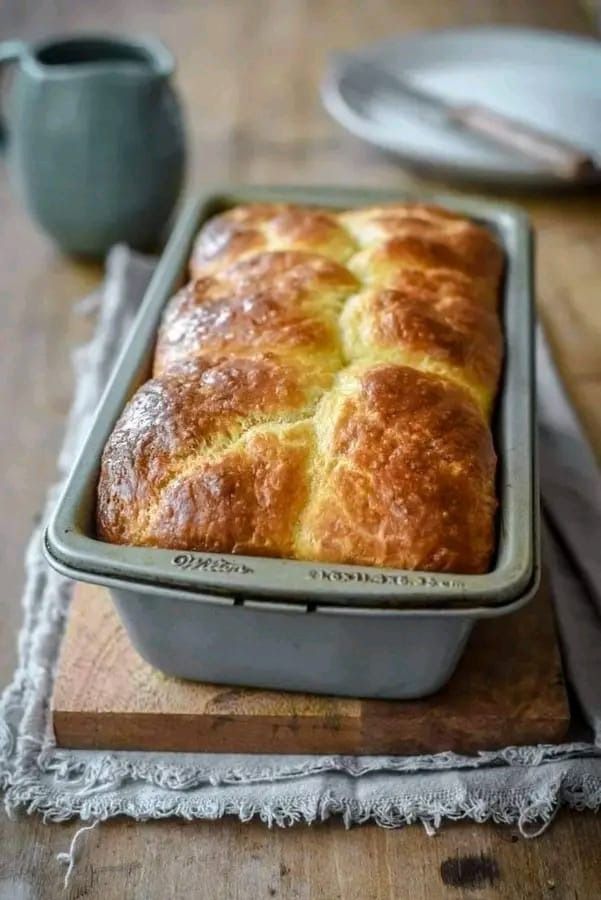Introduction
Brioche bread, with its rich, buttery flavor and light, airy texture, is a beloved staple in bakeries and home kitchens alike. This classic French bread is more than just a breakfast treat; it’s a versatile ingredient perfect for sandwiches, French toast, and even savory dishes. While it might seem intimidating, making brioche at home is surprisingly achievable with the right recipe and a little patience. This guide will walk you through a detailed, foolproof brioche bread recipe, offering tips and tricks to ensure baking success.
Mastering the Perfect Brioche Recipe
Ingredients You’ll Need
Gathering high-quality ingredients is the first step to a perfect brioche. Here’s what you’ll need:
- All-Purpose Flour: 4 cups (500g), plus more for dusting. Bread flour can also be used for a chewier texture.
- Active Dry Yeast: 2 ¼ teaspoons (1 packet)
- Granulated Sugar: ¼ cup (50g)
- Salt: 1 ½ teaspoons
- Large Eggs: 6 large, at room temperature
- Unsalted Butter: 1 cup (226g), softened but still cool
- Milk: ¼ cup (60ml), lukewarm
- Egg Wash: 1 large egg, beaten with 1 tablespoon of milk (for brushing)
Step-by-Step Instructions: The Brioche Baking Process
- Activate the Yeast: In a small bowl, dissolve the yeast and 1 teaspoon of sugar in the lukewarm milk. Let it sit for 5-10 minutes, until foamy. This indicates that the yeast is active.
- Combine Dry Ingredients: In the bowl of a stand mixer fitted with a dough hook, combine the flour, remaining sugar, and salt.
- Add Wet Ingredients: Add the yeast mixture and eggs to the dry ingredients. Mix on low speed until a shaggy dough forms.
- Incorporate the Butter: With the mixer running on low speed, gradually add the softened butter, a few tablespoons at a time, allowing each addition to be fully incorporated before adding the next. This step is crucial for achieving the characteristic richness of brioche.
- Knead the Dough: Increase the mixer speed to medium-low and knead the dough for 8-10 minutes, or until it becomes smooth, elastic, and pulls away from the sides of the bowl. The dough will be quite sticky, but resist the urge to add more flour.
- First Rise: Transfer the dough to a lightly oiled bowl, turning to coat. Cover with plastic wrap and let it rise in a warm place for 1-1.5 hours, or until doubled in size.
- Refrigerate the Dough: Punch down the dough gently to release the air. Cover the bowl tightly with plastic wrap and refrigerate for at least 4 hours, or preferably overnight. This cold fermentation develops flavor and makes the dough easier to handle.
- Shape the Dough: Turn the chilled dough out onto a lightly floured surface. Divide the dough into equal portions depending on the desired shape. For a classic brioche à tête (with a “head”), divide the dough into larger and smaller pieces. Shape the larger piece into a ball and place it in a buttered brioche mold or loaf pan. Make an indentation in the center and place the smaller ball on top.
- Second Rise: Cover the shaped dough with plastic wrap and let it rise in a warm place for 1-1.5 hours, or until almost doubled in size.
- Preheat and Bake: Preheat your oven to 375°F (190°C). Brush the top of the brioche with egg wash.
- Bake: Bake for 30-35 minutes, or until the crust is golden brown and the internal temperature reaches 190-200°F (88-93°C). If the crust is browning too quickly, tent it with foil.
- Cool: Let the brioche cool in the pan for 10 minutes before transferring it to a wire rack to cool completely.
Tips for Brioche Success
- Use Room Temperature Ingredients: Room temperature eggs and softened butter emulsify better, resulting in a smoother dough.
- Don’t Overknead: Overkneading can make the brioche tough. Knead until the dough is smooth and elastic.
- Chilling is Key: Don’t skip the refrigeration step. It’s essential for flavor development and dough handling.
- Proper Proofing: Ensure the dough has enough time to rise in both stages.
- Oven Temperature: Accurate oven temperature is vital. Use an oven thermometer to ensure accurate baking.
Brioche Variations
Once you’ve mastered the basic brioche recipe, feel free to experiment with variations:
- Chocolate Chip Brioche: Add chocolate chips to the dough before the first rise.
- Cinnamon Swirl Brioche: Roll out the dough and spread with cinnamon sugar before shaping.
- Savory Brioche: Incorporate herbs, cheese, or roasted vegetables into the dough.
Conclusion
Making brioche bread at home is a rewarding experience. While it requires some time and attention, the result is a delectable, buttery bread that will impress your family and friends. By following this detailed recipe and the provided tips, you’ll be well on your way to baking perfect brioche every time. Enjoy!
